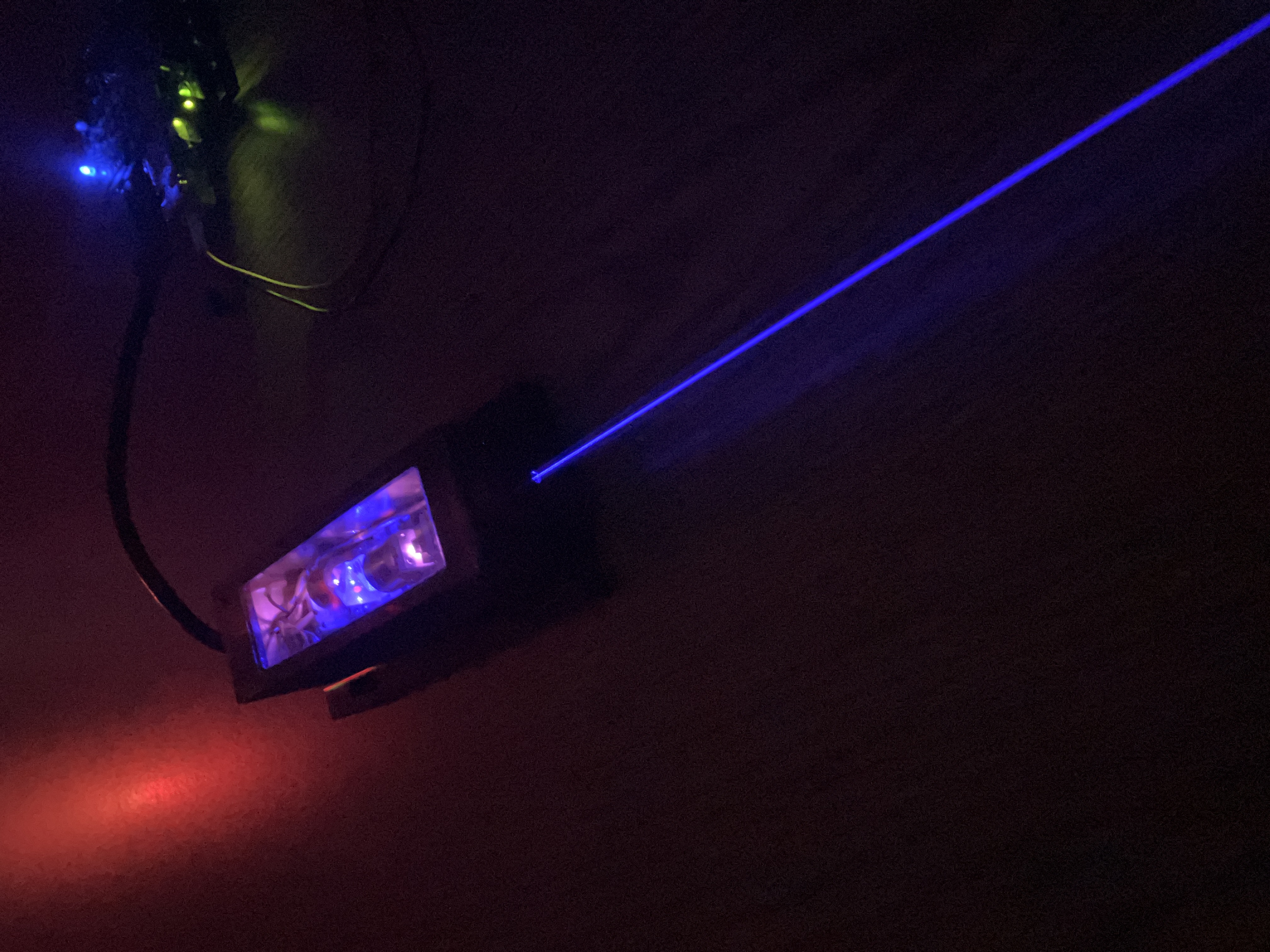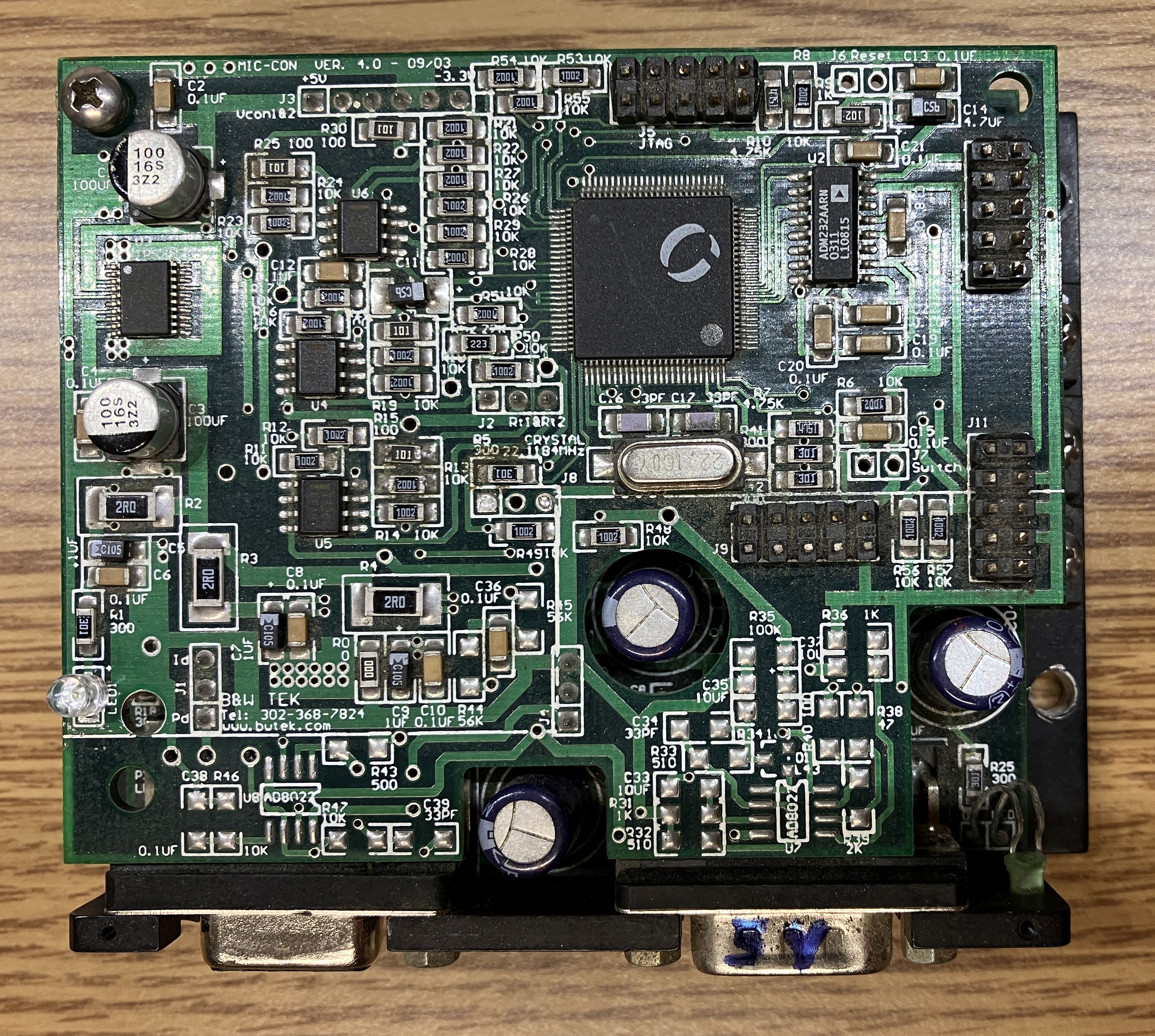The B&W Tek BWB-10-OEM is a 473nm DPSS laser capable of around 10-20mW of output power. This unit is on loan to us from Patrick (Zenodilodon). We appreciate the opportunity to go over this fascinating laser system in detail and to operate it on our workbench! These laser systems are most commonly used in Raman spectroscopy applications and are usually salvage units pulled from various spectrometers and sold on sites like eBay. They often have high hours and aren't always in great condition. This particular unit works quite well, but we have another unit that does not produce any light output at all.

Patrick has added a non-factory customization to this laser head, a glass viewing window that was installed after milling out the top aluminum casing. This allows for easy viewing of all of the components during system operation.

Starting from the connector side of the laser head, light output begins with an 808nm C mount pump diode, capable of around 2.4 W (maximum) of output power. The C mount diode is mounted to an aluminum block, which sits on its own thermoelectric cooler (TEC), and also includes a thermistor for temperature monitoring by the controller. A collimating lens focuses the output from the pump diode into a straight line. Next, the 808nm light is filtered through an anamorphic prism pair, which takes the rectangular output from the pump diode and forms it into a square. The output is then passed through a condensing lens which squeezes the light into a small pinpoint. The next stage is the resonant cavity which is explained in the section below.
The copper piece following the condensing lens contains a small piece (crystal) of Neodymium-doped yttrium orthovanadate (ND:YVO4). This crystal converts the light energy from a wavelength of 808nm to 946nm, and is the first portion of the resonant cavity. The next (middle) part of the resonant cavity is a Lithium triborate (Lib3O5) crystal. This non-linear, frequency-doubling crystal converts the 946nm light to 473nm, the final output wavelength. Non-linear optics is a complex topic, but this crystal essentially doubles the wavelength of the light that is input through a process called second-harmonic generation (SHG). This process occurs when two photons of light, of the same frequency, interact with a non-linear material, which results in a single photon of twice the frequency and half the wavelength of the original photons exiting the crystal. The last part of the resonant cavity is a negative-meniscus lens acting as a parabolic reflector. This lens reflects the infrared energy back through the non-linear crystal, which is required for SHG to occur. The entire resonant cavity assembly sits on its own thermoelectric cooler for temperature stabilization. A thermistor is also present on the base of the cavity to provide temperature feedback to the controller. Non-linear optics require stable (and often very specific) temperatures to operate properly.

The final component is an infrared filter, which prevents any stray IR light from exiting the laser head. Please note that operating this laser with the cover removed, and without protective eyewear, is extremely dangerous due to the IR energy emitted by the 2.4 W pump diode. Please exercise caution with these units!

The 473nm beam resembles a nice sky blue color and is greatly enhanced when used with a fog machine. Interestingly, these are often fiber-coupled within the machine, as evident by the mounting plate on the front of the laser head where the beam exits.

Below are some images of the power supply, it accepts a 5V DC input on the DB-9 connector and requires around 5 amps to run. A full reverse-engineer and pin-out of the power supply and connectors is not currently available to us, but we will be sure to provide that information if we obtain it.




Thanks a million to Patrick for lending us this impressive unit! Please see below for a link to his informative video!